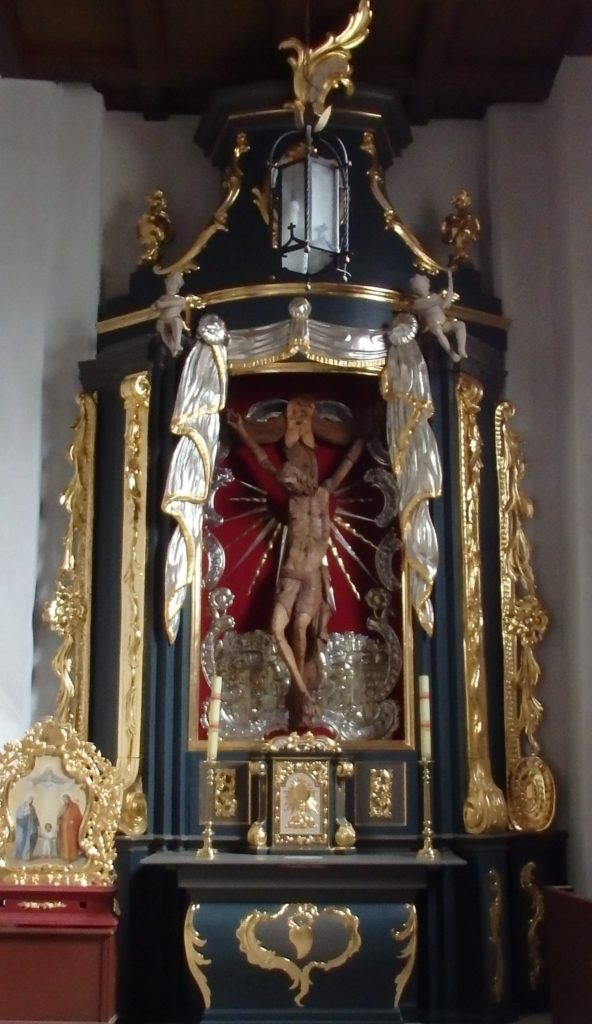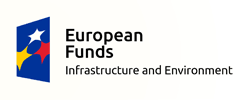Project effects
Parish church of St. Nicholas – Inowrocław
RENOVATION OF THE SIDE ALTAR OF THE CRUCIFIXION FROM THE CHURCH OF ST. NICHOLAS IN INOWROCŁAW
The side altar of the Crucifixion in the church of St. Nicholas in Inowrocław was constructed in the second half of the 18th century in the Rococo style. In its centre there is a statue of the Crucified Christ from the middle of the 14th century, placed against the background pressed on a silvered sheet with the cityscape of Jerusalem.
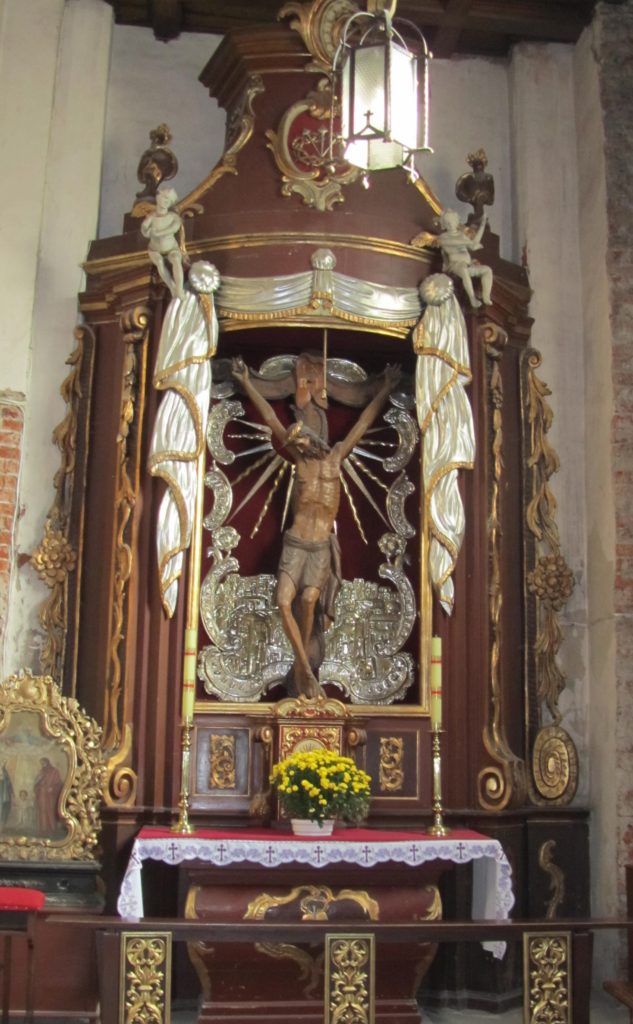
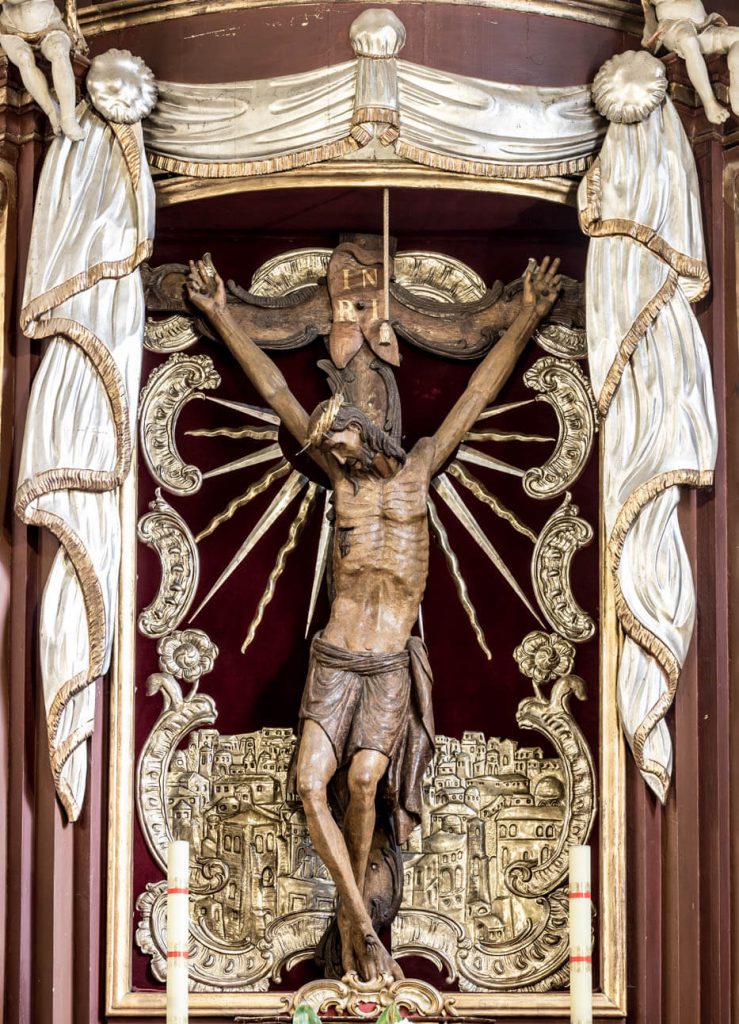
The altar had been re-painted many times. Preliminary uncoverings showed four unoriginal layers. A thick layer of repainting blurred and flattened the modelling of ornaments and sculptures. High humidity in the church caused a destruction of wood due to the growth of fungi and mould. The foraging of woodboring beetles is visible in a bigger scale in the architecural elements of the altar. Humidity fluctuations induced the peeling of paint and primer layers in certain parts.
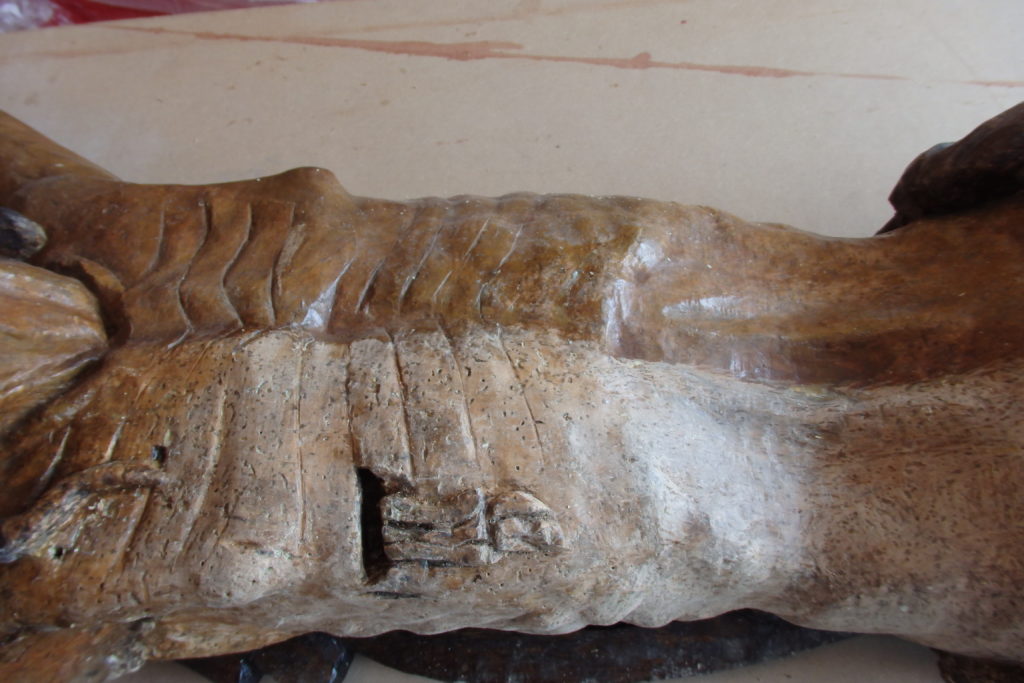
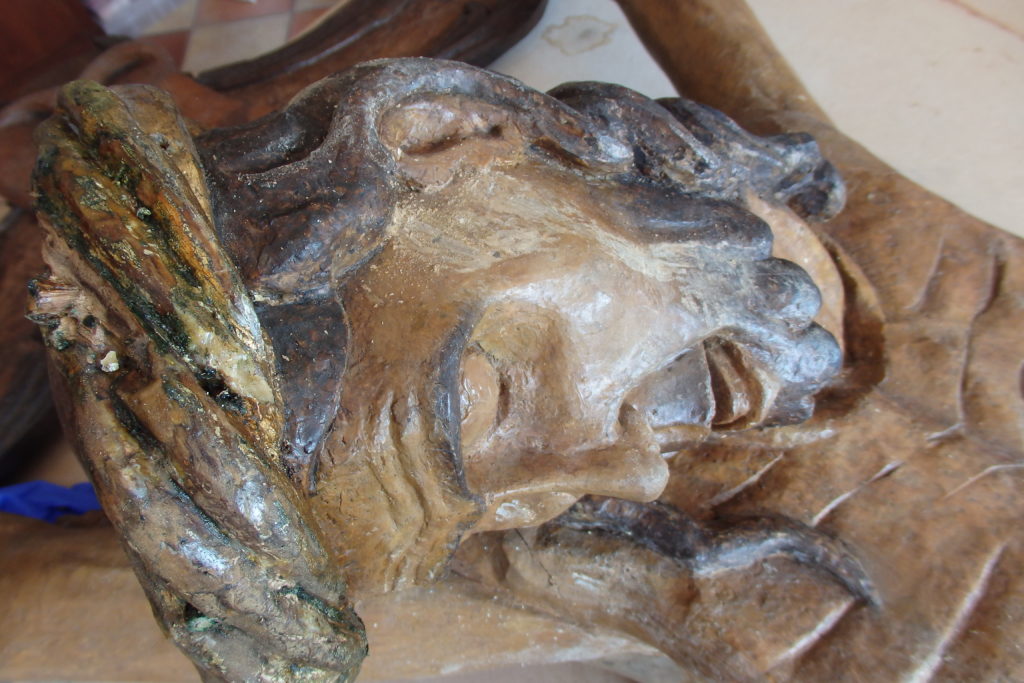
The statue of Christ was renovated in 1981. According to the documentation, it had been covered in many layers of overpainting, which were removed during conservation works. No original polychromy was found then. The whole surface was modelled in wax and resin putty, and in bigger cavities, copper nails and wire were used. The surface was covered in shellac solution.
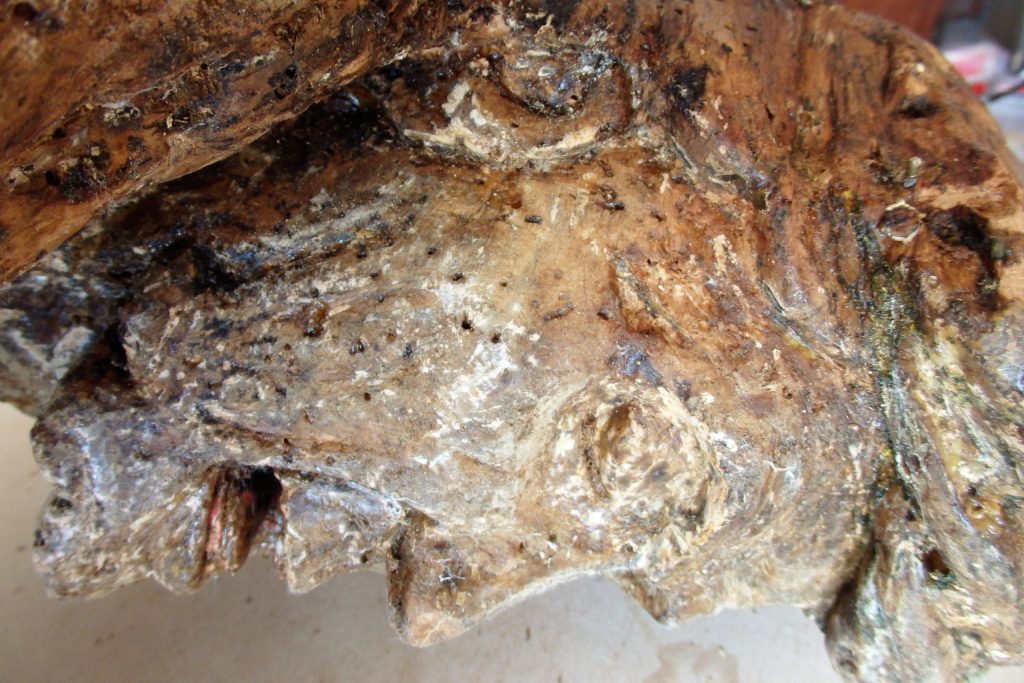

The sheet with the cityscape of Jerusalem was incorrectly secured, becasue silver turned dark and one could observe brass corrosion in the places where paint had been wiped off.
The purpose of renovation is reinforcement of wood integrity and construction of the altar, and then conservation and complementation of the original layers of paint and gilding. In effect the original artistic expression will be restored and the substance structure of the historical object reinforced.
The works started with photographic documentation and description of the object’s state of preservation, and then the object was disassembled. The first step involved cleaning from dust and webs, and gluing movable elements. All uncovered, wooden parts of the altar were sterilized in order to eliminate potential active insect larvae.
Stratigraphic uncoverings were done, from which it was concluded that the original polychromy was the colour of dark blue and dark grey, the ornaments, chambranles, and pillars were gilded with matt and gloss finish, and the curtain – silver.


The next procedure was a full removal of the overpaintings, after which wood was impregnated. Then the outlets openings caused by beetles in the front and the back were filled. Next, construction and carpentry works were done, which aimed to stabilize the construction of the object as well as the bottom of the altar and profiled slats were reconstructed. Delaminations and cracks between planks were glued together, wider slits were filled, damaged or missing elements complemented with inserts made of fresh wood called “plugs”. Unoriginal cast primers were removed, the cavities were filled, and the surfaces of putty refined with sand paper.

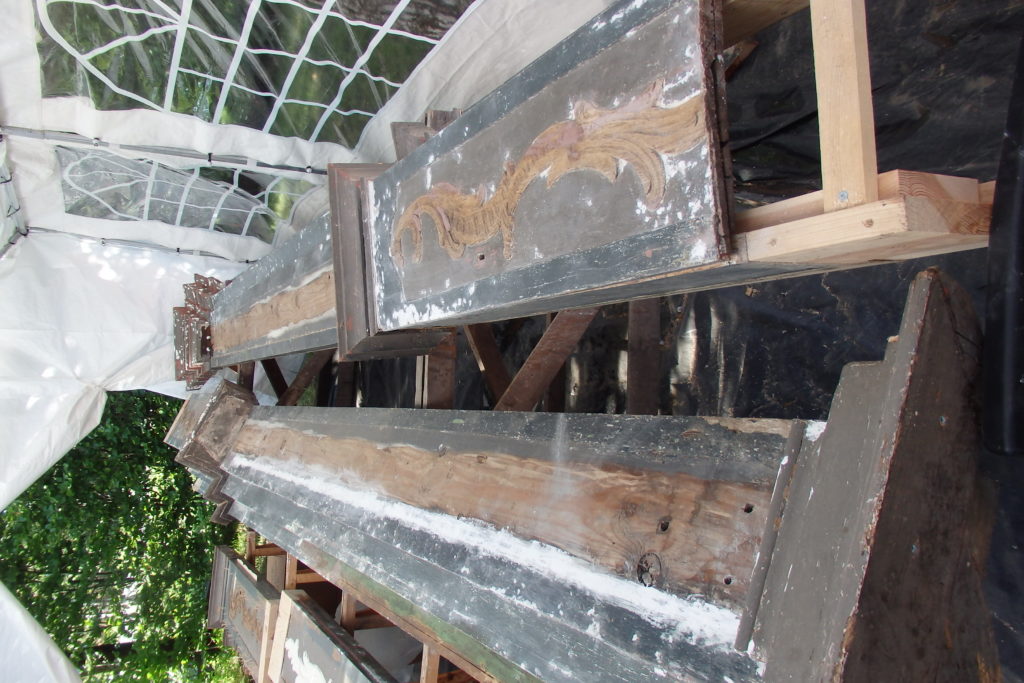
Gilding was made with 23 ¾ karat gold leaf with gloss finish, and silver was put on the curtain which was burnished when dry. Finally, silver surface was secured from oxygenation by the application of three layers of shellac solution.
The layer of paint in the bottom new parts of the altar was reconstructed on the basis of preserved original artwork. All polychromed elements were protected with retouch varnish.

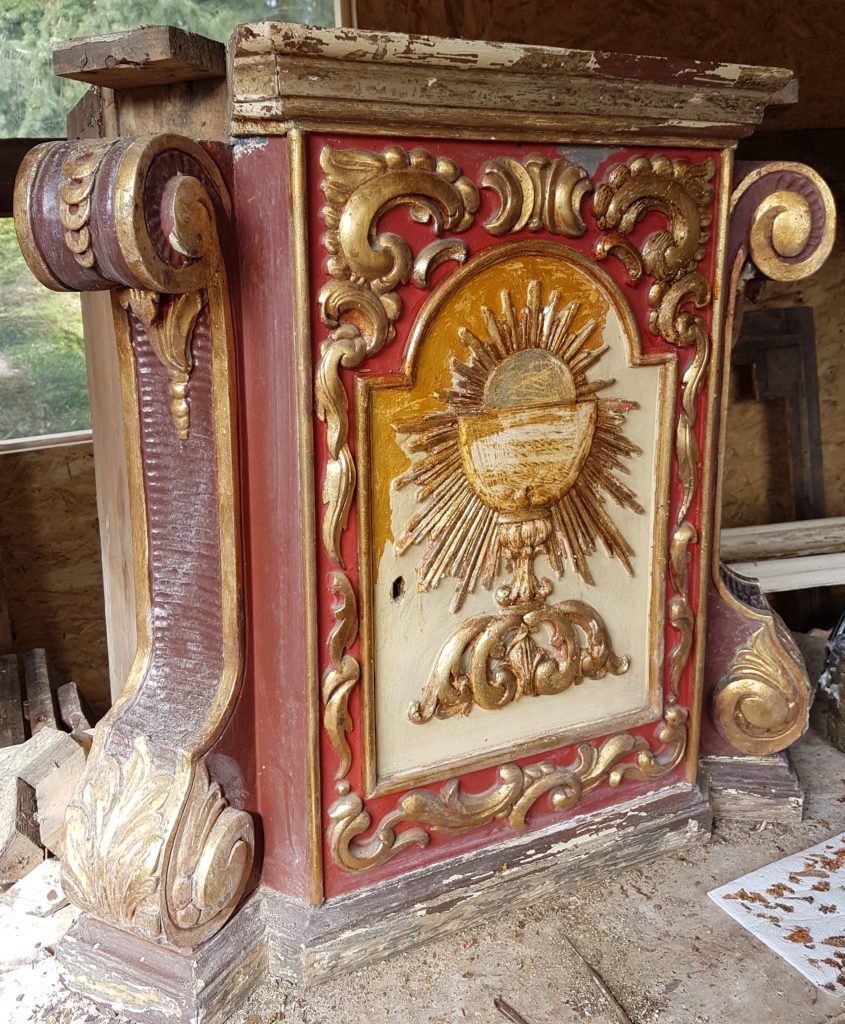
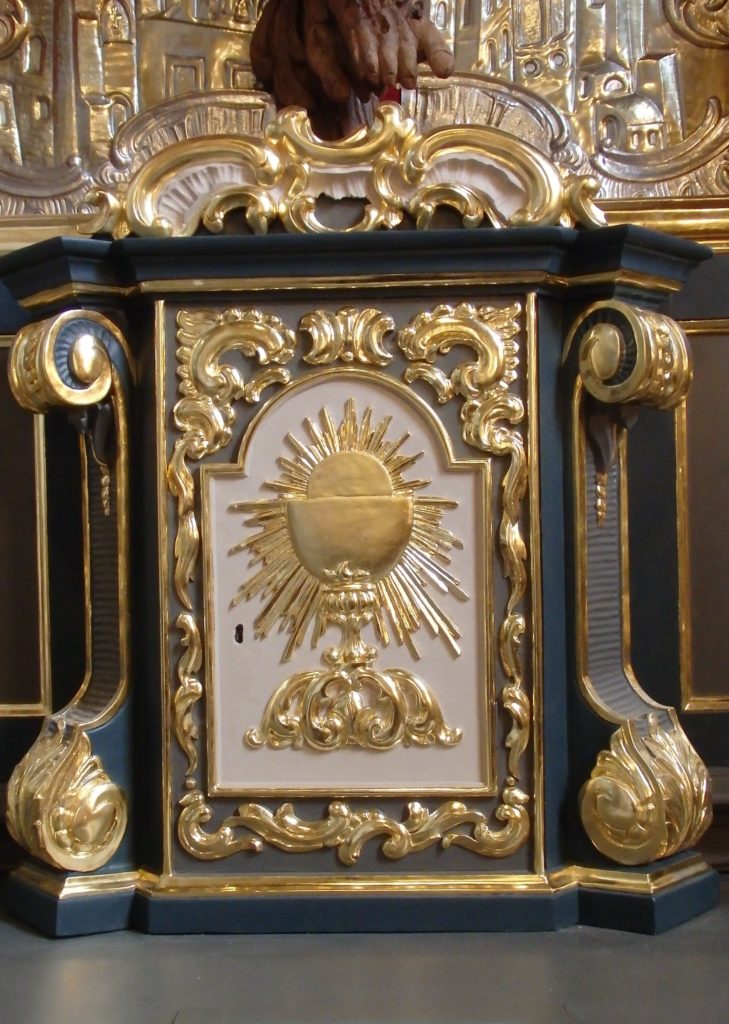

The statue of the Crucified Christ was cleaned from all unoriginal interferences and conservatively preserved. All wax and resin putty and resin substance were removed, and only fragments of paint layers from 1981 conservation works were left. Then the weakened wooden structure was reinforced.
Sheets with the view on Jerusalem were flattened, signs of corrosion removed and silver was cleaned. The the surface was polished and secured.

